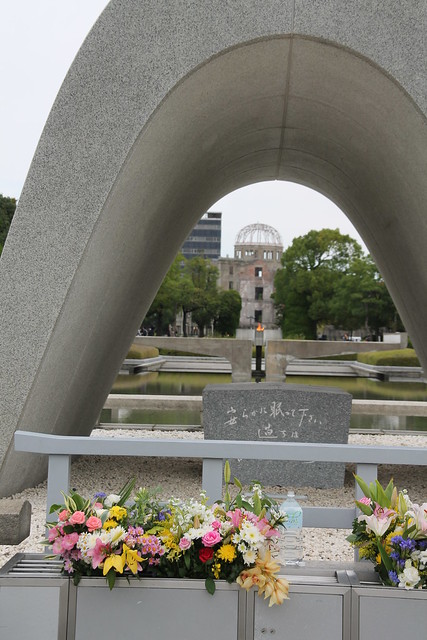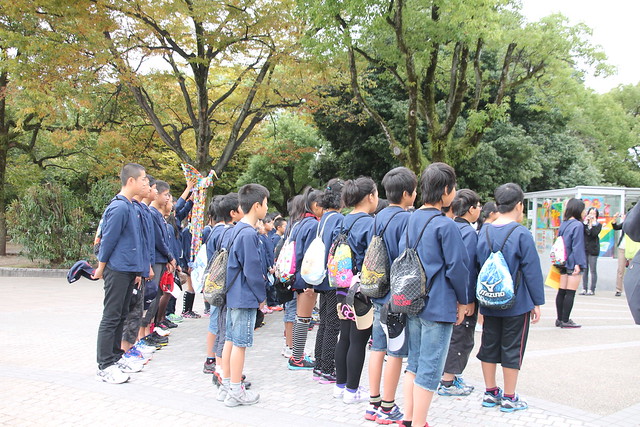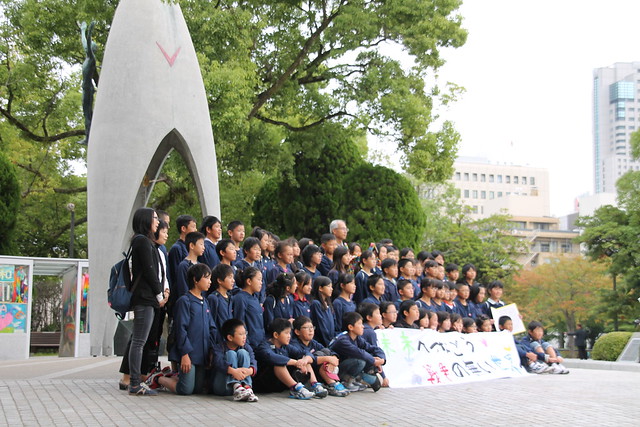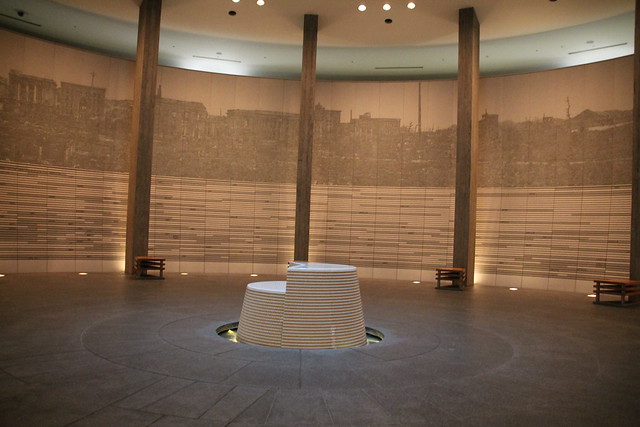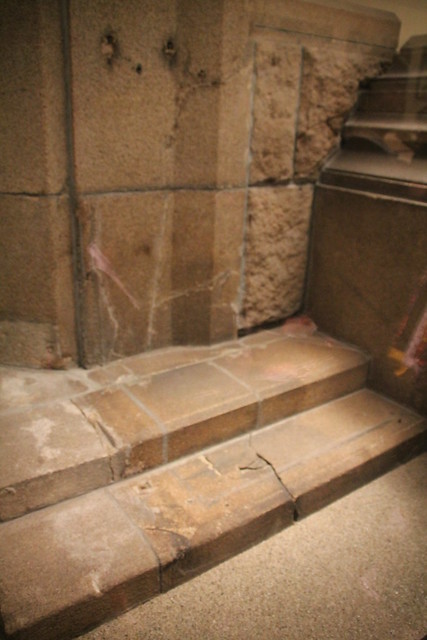Today feels like our last full day in Japan – tomorrow is travelling back to Tokyo and getting ready to leave.
We’re still in Hiroshima and the plan today was to walk round the Peace Memorial Park and visit the museum and memorials there.
First was the A-bomb Dome. As a concrete building, it was one of the few remaining standing in the centre of Hiroshima and has been left (after much deliberation over the years) as a permanent reminder. It is preserved in the same state of disrepair as it was after the bombing.
Wandering around the rest of the park, there are many more memorials. To students, to Koreans, to all the victims. The cenotaph contains a record of all the people who have died, all those who experienced the bomb, updated every year on 6th August as the aging survivors die.
The Children’s Peace Memorial probably had the most activity around it, as large groups of schoolchildren queued up to take their turn. Each class bought paper cranes, 1000s of them, connected and threaded into other shapes. We saw one group line up, the nominated student read from a book to the memorial, then the whole class sang.
Finally, they presented their assembly of paper cranes to be added to the collection. After posing for pictures, they left to make way for the next group.
The Memorial Hall winds underground, leading to a circular mosaic of tiles, one for each person impacted, making a picture of the flattened city after the blast.
This is where the records are kept, the written and video stories and screens show the never-ending scroll of names and pictures.
The Peace Memorial Museum is split into two parts. The first examines the history of Hiroshima, of Japans involvement in the wars in the area and how Hiroshima was a main staging post. It factually goes into the politics and decisions made about why the bomb was used and why Hiroshima was chosen as the target.
The second section was the stories of the victims and the survivors. How the city was destroyed, remains and artifacts of the day. One such as these steps from a bank, forever scarred with the shadow of the person who was sitting there at 8.15am on 6th August 1945, waiting for the bank to open. It’s an image that stuck in my mind when I read Hiroshima by John Hersey in the 80s, when the Cold War always meant another nuclear attack was still thought possible and the Protect and Survive information was out there.
That was our visit for the day. A lot to think about, too much. So we had lunch in the sun and discussed other things. Like do Japanese schoolchildren actually spend anytime in school as they always seem to be on trips. At every single location we have been there have been school parties, in lines, in groups, being shouted at my teachers/guides with megaphones or filling in the ubiquitous workbooks. They all want to say ‘hello’ to us foreigners and giggle.
Or how the stereotype of Japanese tourist with the ever-snapping camera is not just behaviour when they’re abroad but it’s magnified here. If we ever thought we could not take a photo, maybe because we were in a shrine, no matter, we just copied the actions of the other Japanese tourists.
Tomorrow, back to Tokyo for the last night then we board the plan for London. Where I believe it’ll be cold and wet!
Today’s photos can be seen on Flickr
Day 13 post – Hiroshima and Miyajima : Day 12 post – Nara
Day 11 post – Kyoto : Day 10 post – Kyoto : Day 9 post – Race day at Suzuka : Day 8 post – Sill at Suzuka : Day 7 Post – Suzuka : Day 6 Post – Hakone to Nagoya : Day 5 Post – Hakone : Day 4 Post – Tokyo : Day 3 post – Tokyo : Day 2 post – Tokyo : Day 1 post – Tokyo


